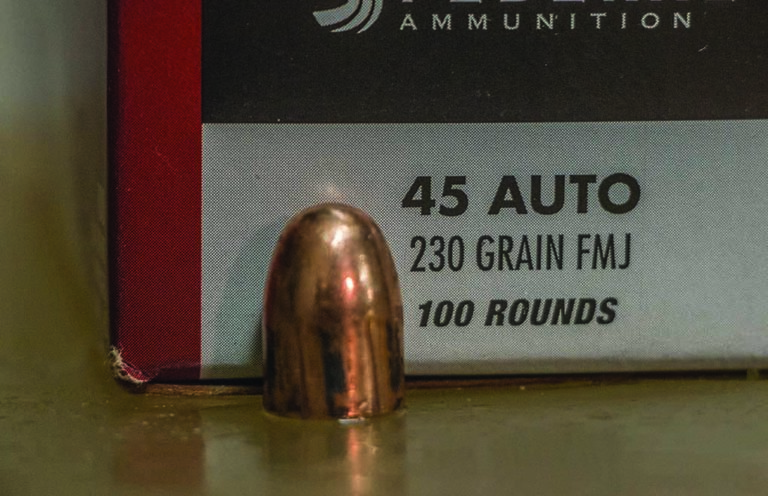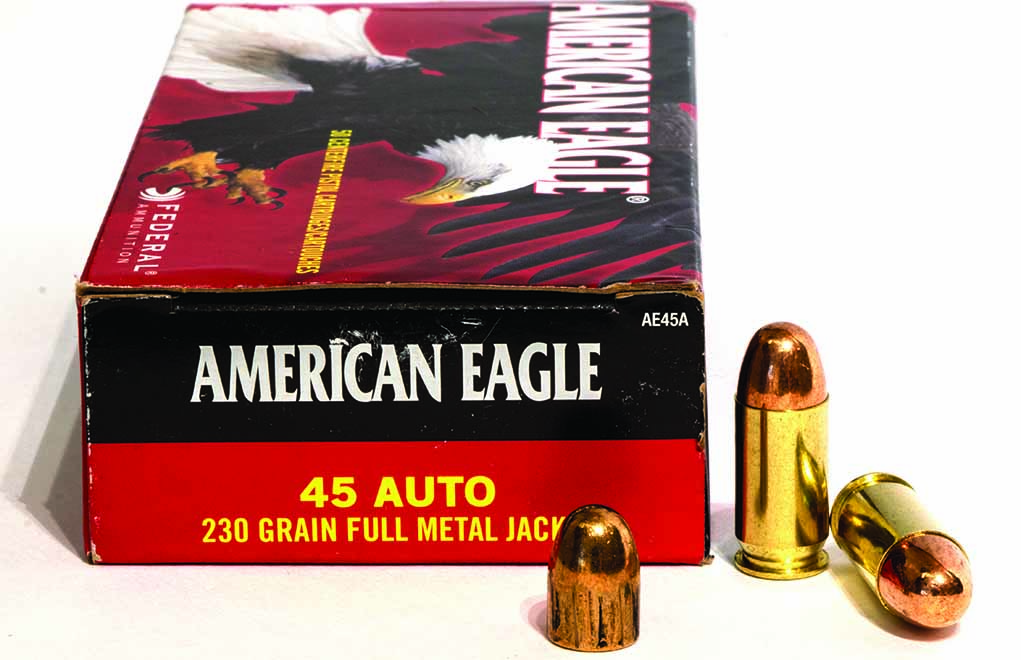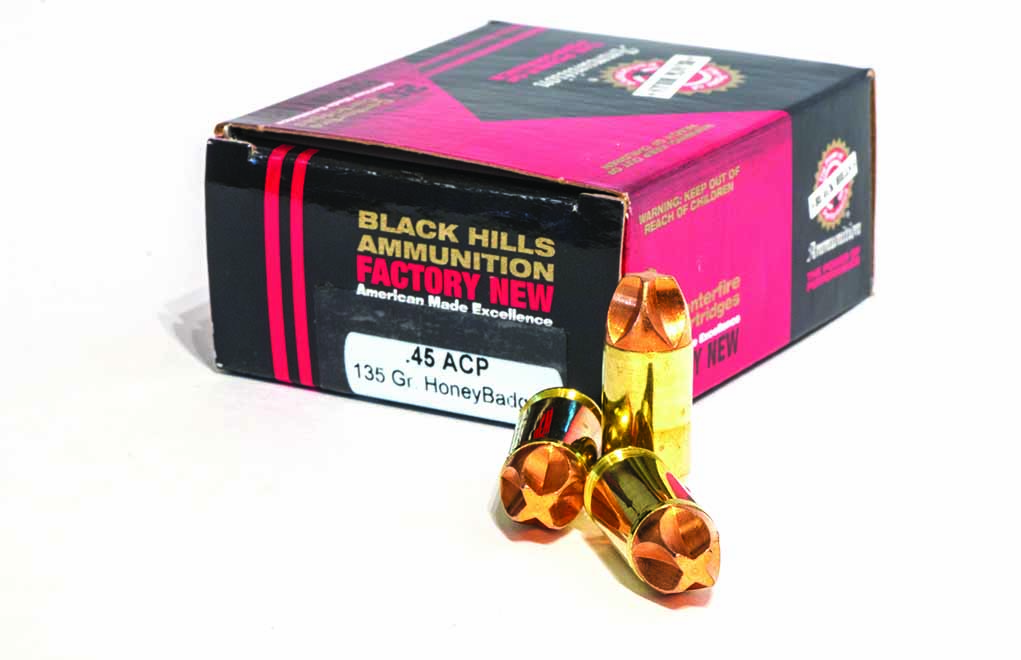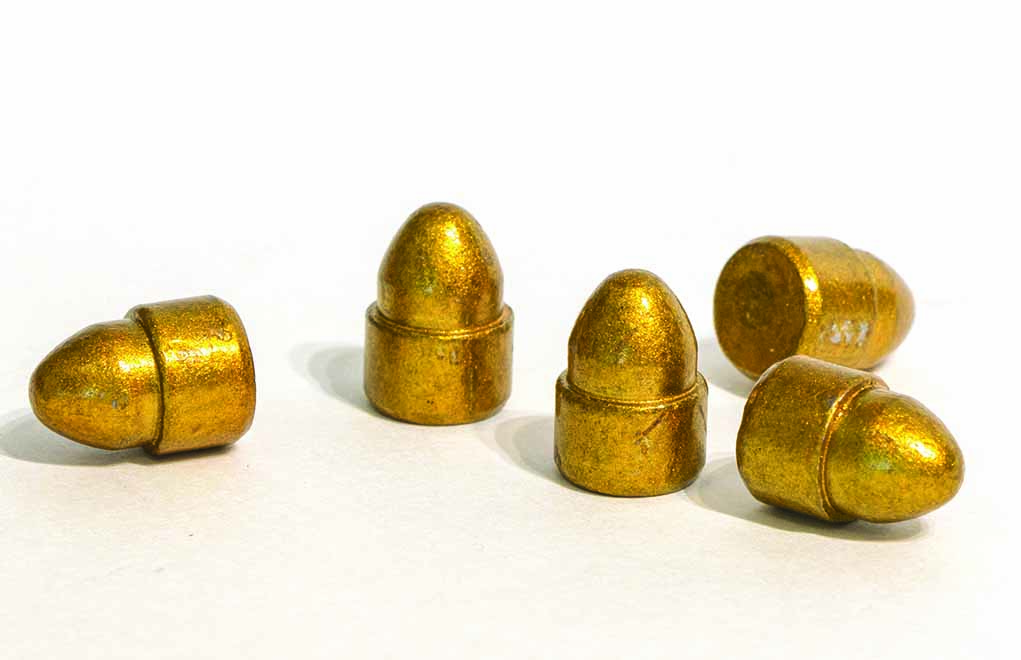
In the era of cutting-edge expanding bullets, does .45 ACP ‘Hardball' have a place as defensive ammo?
How does .45 Hardball perform:
- 230-grain projectile loaded to an average chamber pressure of about 21,000 psi.
- Nominal muzzle velocity of between 800 and 900 fps.
- Typically penetrates to around 30 inches in 10 percent ordnance gelatin.
- Generally considered reliable out of a 1911.
I spend about a month in South Africa every year. Most of that time is spent hunting, and I’ll have a rifle nearby. However, I carry a handgun every day and feel kinda naked if I don’t have one on my side. The problem is, you cannot take a defensive handgun to South Africa. Fortunately, having friends in African places has its advantages, and every year a professional hunter loans me the use of his original Colt’s 1911 in 45 ACP.

The first year he offered I was a bit surprised to find the magazines loaded with 230-grain FMJ ammo. Commonly referred to as “hardball,” most defensive handgun experts consider this stuff only marginal as a carry load. I generally prefer an expanding bullet as well, so I asked the professional, “Is this the only ammo you have?” He gave me a quizzical look and said, “Yeah. Why? That not good enough for you?” Ecstatic with the loan of the handgun, and a bit concerned I might have insulted him, I said, “No, this’ll do just fine.”
And, it did.
.45 ACP Hardball Performance
“Hardball” is shooter-slang for copper-jacketed, lead, handgun bullets, more technically described as “full metal jacket” or “FMJ.” Early handgun projectiles were simply lead bullets with a round-nosed shape. But, as velocities increased, applying a copper or gilding metal jacket circumvented excessive barrel leading, improved accuracy, and increased penetration when bone or intermediate objects were encountered.
More Ammo Posts:
Some say the common cliché of “playing hardball” refers to the playing of baseball — with a hard ball — as opposed to softball. However, given the aggressive and ruthless action the term playing hardball communicates, I think it’s a better expression of the difference in shooting someone or something with a hard, jacketed bullet as opposed to a soft bullet of exposed lead. Regardless, what many shooters do not realize is how effective .45 hardball can be.
In what they would like to you believe is their infinite wisdom, the Federal Bureau of Investigation (FBI) has determined a defensive handgun bullet should penetrate at least 12 inches in 10 percent ordnance gelatin. The FBI also believes the bullet should expand. That expansion is what makes meeting the magical 12 inches of penetration problematic. For example, one of Federal’s most respected loads for the .45 ACP is the 230-grain HST. It expands wide — to almost an inch — but just barely meets the 1-foot penetration threshold.

On the other hand, 230-grain hardball ammunition will generally penetrate to around 30 inches in 10 percent ordnance gelatin. In fact, even non-jacketed, 230-grain loads, like Federal’s Syntech and Action Pistol, will penetrate just as far. Granted, none of these bullets will expand, but, short of adequate penetration, nothing else really matters. And, let’s not forget that the fantastic reputation the .45 ACP cartridge gained during both World Wars was founded with good ol’, GI ball ammo: 230-grain hardball.
Over the years I’ve used that borrowed 1911 loaded with hardball to dispatch and kill a multitude of critters. Just this year it put the finishing touches on several large warthogs, including one that two .308 Winchester rounds had failed to put down. The professional hunter who loaned me the pistol told me he’d used hardball to kill 11 warthogs, one kudu, one gemsbok, two red heartebeest, two blesbok and three porcupines. He said he never needed more than one shot, and added, “I believe in the ability of the .45 ACP as much as I believe in the Bible.”
That’s about as strong a testament of a cartridge and ammunition as you’re going to find.
How .45 ACP Hardball Is Made
When it comes to hardball, it’s not all created equally, but it’s all very similar. A 45 hardball load is formed by pressing a sheet of copper or gilding metal into a cup around what is generally a pure lead core. The thickness of the jacket — copper or gilding metal — might vary from manufacturer to manufacturer, as might the content or hardness of the core.

It’s a .45 caliber, 200-grain, fully coated hardcast —
Brinell hardness of 17 — round-nose semi-wadcutter. It will penetrate deep and cut a large round hole.
These 230-grain projectiles are then loaded to an average chamber pressure of about 21,000 psi, at a nominal muzzle velocity of between 800 and 900 fps. With muzzle energy between 326 and 413 ft-lbs., recoil is moderate, and even the 800 fps loads will make IPSC’s Major Power Factor. And, an often-overlooked virtue is reliability: Hardball tends to function extremely well in a wide variety of handguns.
.45 ACP Hardball For Self-Defense?
When it comes to defensive handgun ammunition, the quest is to find an ideal balance between penetration and expansion, with the ability to defeat varying types of intermediate barriers, ranging from heavy clothing to automobile glass. That’s the underlying premise of the protocol used by the FBI and other law enforcement agencies. Hardball ammunition represents one end — the penetration end — of that spectrum.
For self-defense, the ideal answer is most likely somewhere between the two extremes. But, one thing’s for sure: There’s nothing wrong with playing hardball, especially if your goal is to shoot two bad guys at once. Just because it’s old does not mean it will not work. I know a lot of veterans and at least one professional hunter who swear buy it.
Editor's Notes: This article originally appeared in the November 2018 issue of Gun Digest the Magazine.

Next Step: Get your FREE Printable Target Pack
Enhance your shooting precision with our 62 MOA Targets, perfect for rifles and handguns. Crafted in collaboration with Storm Tactical for accuracy and versatility.
Subscribe to the Gun Digest email newsletter and get your downloadable target pack sent straight to your inbox. Stay updated with the latest firearms info in the industry.

![Best Concealed Carry Guns In 2025 [Field Tested] Wilson Combat EDC X9S 1](https://gundigest.com/wp-content/uploads/Wilson-Combat-EDC-X9S-1-324x160.jpg)


![Best 9mm Carbine: Affordable PCCs [Tested] Ruger Carbine Shooting](https://gundigest.com/wp-content/uploads/Ruger-Carbine-Shooting-100x70.jpg)
![Best AR-15: Top Options Available Today [Field Tested] Harrington and Richardson PSA XM177E2 feature](https://gundigest.com/wp-content/uploads/Harrington-and-Richardson-PSA-XM177E2-feature-100x70.jpg)

The mag I have loaded in my 45, when I’m out in the field, is always hardball. The 2nd mag I will load some HPs. But that 1st mag, I might be shooting at cars or a charging big animal. I like the idea of about 15 rapid-fire, knock-down, penetrating, accurate bullets, which will put hurt on any perp. Don’t care about expansion. Nightstand gun is different and it’s not a 45.
I have a 1977 M1911A that I bought new. I always bought ammo at the Old West Gun Room in El Cerrito California. Then one time I was at a range and I bought a box of ammo and …. it jammed. I never had a gun of any kind ever jam in my life; I had heard about it, eg the boys in the boxes from Viet Nam because their M16 jammed when I was twenty years old. I just couldn’t figure it out. The guy next to me un-jammed my pistol for me. The rangemaster came over and looked at me like I just fell off a turnip truck and told me “didn’t you know you’re only supposed to use hardball in that weapon?” Until I read this article I didn’t actually ever find out what he was referring to. Maybe I’m still not sure. Maybe I should read it a few more times. Maybe when it comes to ACP cartridges, full metal jacket and hardball are the same thing.